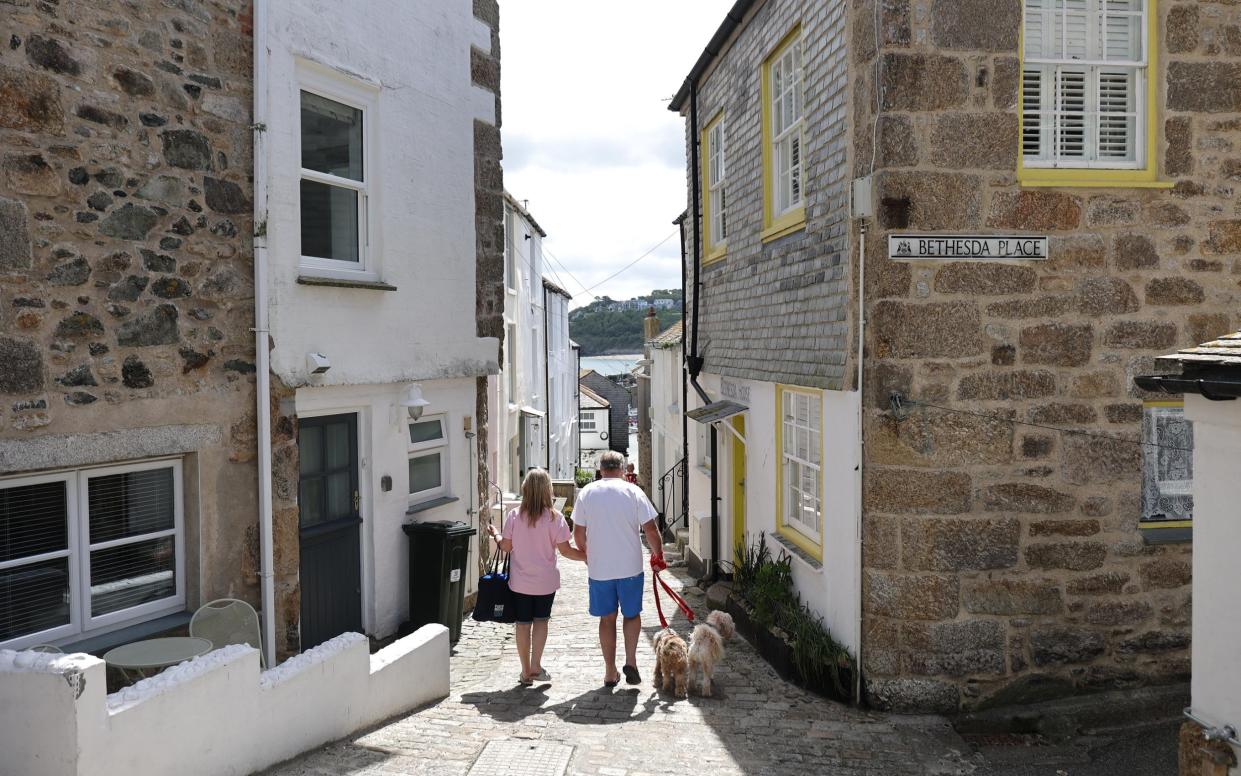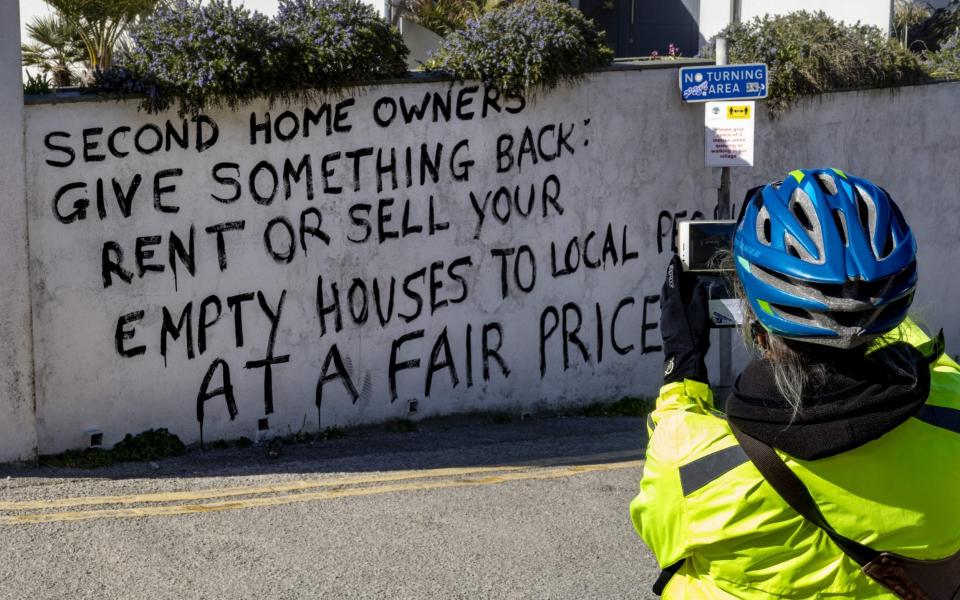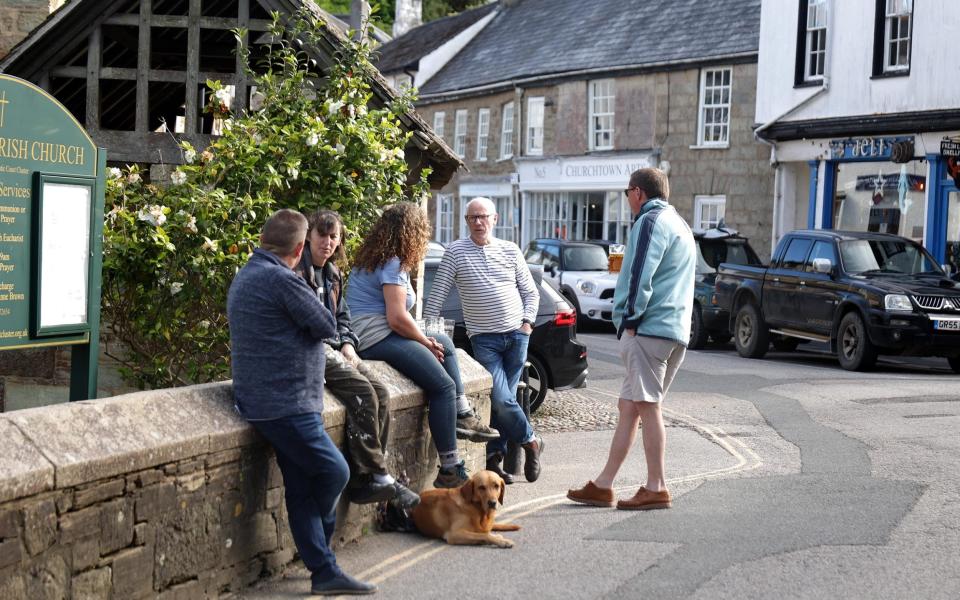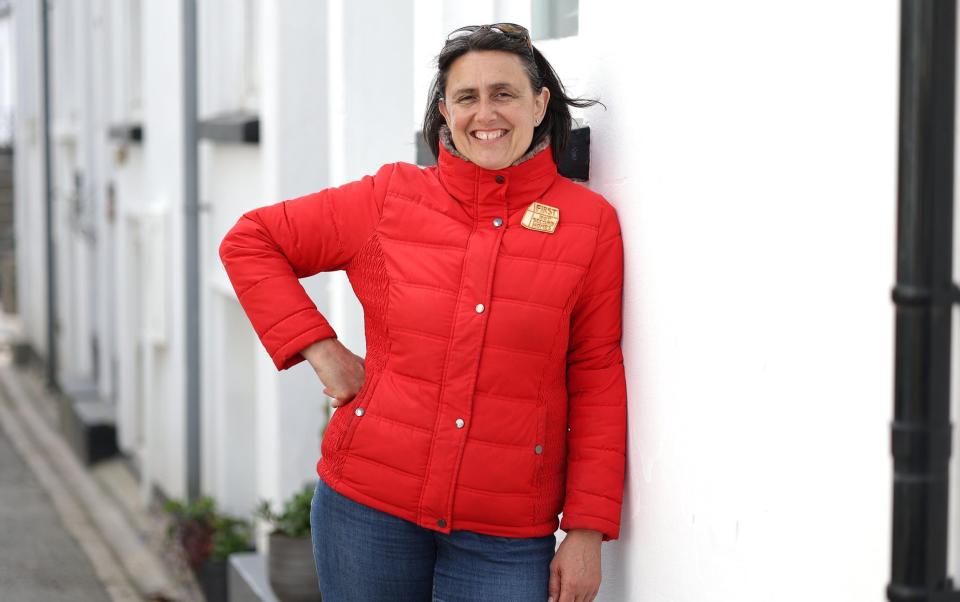Why Cornwall can’t survive without second home owners

It wasn’t subtle, but nor was subtlety what the artist was going for. One morning in March, the people of St Agnes, in north-west Cornwall, awoke to find a new landmark in their quiet coastal village: graffiti, daubed on the whitewashed wall of a property near the beach.
“Second home owners give something back: Rent or sell your empty houses to local people at a fair price,” it read. Beside it lay an after-thought: “No more investment properties.”
The wall became something of an ironic tourist attraction; some joked it had become more famous than the village’s hedgehog ice creams. Six weeks on, it’s been concealed – the wall pristine and white again. But it will make no difference. In Cornwall, you can paint over the war between locals and visitors all you like; it’s still just there, simmering under the surface.
Every few days there’s a new attack on second home owners in Britain’s prettier corners. Earlier this month, for instance, Visit Cornwall began a consultation on a proposal to introduce compulsory registration for all Cornwall’s rented holiday homes. If it’s green-lit, homeowners may be forced to pay a registration fee of around £200.

Before that, the Queen’s Speech included a plan to increase council tax by 100 per cent on second homes that are neither used nor let out by their owners for at least 70 days per year – seen by many as an attempt to shore up the ‘Blue Wall’ across the south, and reassure locals it has them in mind, not just part-timers.
And just this week there was more, when MPs’ housing questions turned to the subject. Tim Farron, the former Liberal Democrat leader, complained that local communities had been “hollowed out” by Airbnbs and second homes. The housing minister, Stuart Andrew, said the issue was something he’s dealing with “on a daily basis with colleagues from around the country” and that, in addition to a council tax hike, “there is more we need to explore.”
While he explores that, I’ve been exploring the frontline – namely St Ives and St Agnes, both of which hummed with visitors in the recent, squint-inducing May sunshine. In Cornwall, a £2 billion revenue, or up to a fifth of all private-sector income, comes from tourism, and you can believe it.
Per the latest figures, there are more than 13,000 second homes in Cornwall (as well as some 10,000 Airbnbs), and in some areas, including St Minver and St John, the percentage of homes that aren’t primary residences is over 35 per cent.
In the South West, the number of properties available to buy has reportedly dropped 39 per cent in a year. Meanwhile prices have risen by around 12.5 per cent, and the council housing waiting list has hit crisis point, leaping from 10,947 in 2019 to 21,501 last month.

All that provides plenty for the Conservatives, who became the first party to take full control of Cornwall Council last year, to mull over as they figure out how to keep the South on-side without demonising second home owners. There were no elections here this month, but the Liberal Democrats winning in Somerset may have given CCHQ pause. Empty holiday lets can’t vote, of course.
In this climate, second home owners may well feel a little less welcome when they tumble down the A30 for the long bank holiday weekend. After all, not all are like Gordon Ramsay, who recently sold one of his properties in Cornwall for a record £7.5 million, and spoke about loving Cornwall “but hating the Cornish”.
As second home owner Sally Jones wrote last month: “I sympathise with the locals’ fury at the ‘greedy’ incomers, particularly in resorts that become ghost towns. But it’s definitely not all ‘take-take-take’.”
Interior designer Kate Hanson bought a four-bed house in Mawgan Porth, between Newquay and Padstow in 2019, and loves it for all the reasons people tend to cite: “a slower pace of life, great food, access to the sea, lovely people.” Hanson, 58, and her husband, Markham, now travel from their home in Bath (albeit via London, from where they fly to Newquay, as it is “both quicker and cheaper, though I know it’s awful for the environment”) for long weekends in Cornwall “at least twice a month”.
There is never any tension between second home owners and locals, she says. “None at all, we get on extremely well. I feel people’s pain – there is a lot of poverty in-land – but there is a lot of tourism, and we spend a lot of money when we’re down there, as if we’re on holiday. I suppose we haven’t let it stop us, so we haven’t got too much of a conscience.” Eventually, she and Markham intend to move to Cornwall full-time. “At the end of the day, second home owners don’t have a massive hidden agenda. We’re not all bad.”

In St Agnes, the talk is still of that graffiti. “I know exactly who did it, I recognised the handwriting,” says Andy Goundry, a local estate agent. The village is, he reckons, about a 75/25 per cent split in favour of locally owned first homes against second homes or holiday lets. “As a business, we don’t discriminate, and ultimately most people want the best price for their property,” Goundry, 57, says. The rental market is no different – up 25 per cent in a couple of years. “Interestingly, we’ve had some landlords locally who’ve rejected higher offers in favour of keeping the property within the local community. But you’ve got to be able to afford that.”
Real locals in St Agnes are divided on the issue. “Ask 30 people here what they think, and you’ll get 30 different answers,” says one evening drinker outside the St Agnes Hotel. There are niche local issues, like RNLI volunteers needing to live within five minutes of the station for a shout but are unable to. Others are more philosophical.
“It’s essentially: what is a village? Some people just don’t like change, or think it’s all bad when actually, a lot of the people who move here, or even come for holidays, get really stuck in, spend money, and want to be part of the community.”
Down at the cove, where the graffiti could be found, there is a “Not for sale” sign outside a home – one of the few sea-view properties not being let out. It is a campaign poster for “First Not Second Homes”, a protest group co-founded by Cath Navin, a local who runs a bakery business.
“Our elected officials seem to do nothing about it, but while social housing has a place and building houses has a place, the sheer number of Airbnbs and short-term lets, versus what’s available to rent and the price of what’s available to rent in Cornwall, just doesn’t stack up as a working housing system,” Navin, 51, says. “We are not anti-second home owners, but if there’s reform to the system and some people can’t afford their second home, then at least it’s only a second home, rather than somebody who’s losing their first. You can’t really argue with that, can you?”

Estate agents, locals and campaigners all agree on one thing: more affordable housing is needed. Jayne Baker has worked in property in Cornwall for over 30 years, helping people relocate and buy second homes all over the county. “We need second home owners, otherwise pubs would shut, restaurants would shut, shops would shut,” Baker, 65, says.
“I know there are problems – my own children can’t find anywhere to live – but regulations close the stable door well after the horse has bolted. The people with second homes are here as often as they can be, and we’d all love a little investment, wouldn’t we? It’s better than your money being stuck in a bank. I think it’s jealousy, the reason many people moan. It’s not going to change, they just need to build houses.”
In St Agnes, Goundry is about to knock off for a week in the Lake District, a region 400 miles away but plagued by the same issues. Cornwall has problems, but he’s been around long enough to know they aren’t new. “There’s always been resentment, and it’s always been expensive on the coast,” he says. “I don’t think that’ll ever change.”
It’s been over 40 years since an episode of Not the Nine O’Clock News addressed the arson attacks on second home owners in another part of the UK: a close-up of a crackling blaze was accompanied by the words: “Come home to a real fire – buy a cottage in Wales.” Well, if you want to come home to some fresh new garden wall art…

 Yahoo News
Yahoo News 
